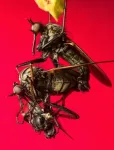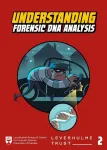(Press-News.org) Key findings: a roadmap to transform energy use by 2050
Electrification (e.g., switching to electric vehicles, heat pumps) alone could cut direct emissions by 45-77% in buildings and 22-86% in transport by 2050.
Combining electrification, efficiency improvements, and behavioral changes could reduce emissions even further: 51-85% for buildings and 37-91% for transport by 2050.
A multi-strategy approach would lower overall electricity demand by 8-33% per year, making the transition more cost-effective and reducing strain on power grids.
The findings align with global climate goals, showing that integrating these strategies can significantly contribute to limiting global warming to 1.5°C by 2050.
“These results demonstrate that the transition to clean energy in buildings and transport can be more manageable than previously thought,” explains Johannes Emmerling, Senior Scientist at CMCC. “By combining electrification with improved efficiency and smarter energy use, we can achieve dramatic emissions reductions while actually reducing strain on electricity systems—leading to lower costs and fewer infrastructure challenges as we tackle climate change.”
By focusing on how we heat our buildings and move around, the research provides a practical roadmap for addressing climate change. It shows that major emissions reductions are possible through three key strategies: electrification, which includes electric vehicles and heat pumps; improving energy efficiency through actions like better insulation and more efficient air conditioning systems; and altering how we use energy, such as by reducing dwelling sizes or adjusting thermostat settings.
Crucially, this work suggests that these key strategies can be implemented using existing technologies, like electric vehicles and energy-efficient building materials, without having to wait for future innovations.
Why this matters: a science and policy challenge
Unlike previous studies that examined individual measures in isolation, this research takes a comprehensive approach, using multiple Integrated Assessment Models to explore how different strategies interact, providing more robust and reliable results than previous single-model studies.
“Our study highlights the often-overlooked demand side of decarbonization,” says Alice Di Bella, PhD candidate and affiliated researcher at CMCC. “By comparing results from multiple models, we provide robust evidence that electrification, efficiency, and behavioral shifts are practical and effective solutions for climate mitigation.”
The study used seven global integrated assessment models, including the WITCH model developed at CMCC, to evaluate emissions reductions across different regions and policy scenarios. CMCC researchers played a key role in analyzing strategy interactions, emission scenarios, and cost evaluations, drawing on the center’s expertise in climate research and economic modeling.
Next steps: turning research into action
The study provides critical insights for policymakers, emphasizing that relying solely on electrification could create unnecessary burdens on electricity systems. Instead, a balanced mix of efficiency improvements, behavioral shifts, and electrification offers the most effective and economically viable path toward decarbonization.
“Our work highlights that the tools to cut emissions are already in our hands,” says Emmerling. “The main challenge lies not in technology but in policy and strategic implementation. By combining these strategies smartly, we can achieve significant reductions while making the transition more affordable, reducing strain on electricity grids, and ensuring a more sustainable future.”
END
Cutting emissions in buildings and transport: Key strategies for 2050
2025-02-05
ELSE PRESS RELEASES FROM THIS DATE:
How parents can protect children from mature and adult content
2025-02-05
Toronto, ON – As children's screen time continues to rise, so does their exposure to age-inappropriate content, including R-rated movies and violent video games. A new study published in BMC Pediatrics underscores the critical role parents play in shaping their children’s media consumption.
As child media consumption increases along with their exposure to mature media content, a new study finds that parent media practices play a key role in shaping preteens’ consumption of mature video games and R-rated movies.
Researchers found that parents’ own screen habits—such as using screens in front of their children and allowing screens during meals ...
By studying neutron ‘starquakes’, scientists hope to transform their understanding of nuclear matter
2025-02-05
The study of ‘starquakes’ (like earthquakes, but in stars) promises to give us important new insights into the properties of neutron stars (the collapsed remnants of massive stars), according to new research led by the University of Bath in the UK.
Such explorations have the potential to challenge our current approaches to studying nuclear matter, with important impacts for the future of both nuclear physics and astronomy. Longer term, there may also be implications in the fields of health, security and energy.
The value of studying asteroseismology – as these vibrations and flares are known – has emerged from research carried ...
Mouth bacteria may hold insight into your future brain function
2025-02-05
The bacteria in your mouth and on your tongue may be linked to changes in brain function as you age, new research suggested.
The study, led by the University of Exeter, found that certain bacteria were associated with better memory and attention, while others were linked to an increased risk of Alzheimer’s disease.
The researchers identified two possible ways these bacteria may impact brain health. This includes harmful bacteria directly entering the bloodstream, potentially causing damage to the brain. Alternatively, an imbalance between beneficial and harmful bacteria can reduce the conversion of ...
Is cellular concrete a viable low-carbon alternative to traditional concrete for earthquake-resistant structures?
2025-02-05
Investigators have found that a product called cellular concrete may be an environmentally friendly alternative to conventional concrete for constructing earthquake-resistant buildings.
In research published in Structural Concrete, the team analyzed the environmental impact of constructing a seven-story archetype residential building in Quito-Ecuador with cellular concrete, which is produced by incorporating a foaming agent that generates air pockets within the concrete matrix to decrease the material’s density while maintaining sufficient structural ...
How does light affect citrus fruit coloration and the timing of peel and flesh ripening?
2025-02-05
Citrus fruit rind color has long been used as an indicator of ripeness, but for some fruits such as mandarin fruit in the Chongqing region of China, the peel and flesh do not ripen synchronously, with the flesh usually reaching maturity while the peel is still green. This is a characteristic that seriously affects its commercial value. In new research published in the Journal of the Science of Food and Agriculture, investigators have discovered how red and blue LED light can stimulate color change in mandarin fruit.
Experiments showed that this light exposure causes ...
Male flies sharpened their eyesight to call the females' bluff
2025-02-05
With bloated bellies and hairy legs, female flies try to look bigger to get food from courting mates. But male flies, in turn, have sharpened their eyesight to call their bluff. A new study by researchers from the Universities of Gothenburg and Stockholm suggests that this is an ongoing evolution where both sexes try to outsmart each other.
For the first time, researchers have been able to show that also males can develop traits that help them pass on their genes despite the manipulative adaptations of the opposite sex. In different species of dance flies, there is a clear correlation between how richly decorated the female ...
School bans alone not enough to tackle negative impacts of phone and social media use
2025-02-05
Students attending schools that ban the use of phones throughout the school day aren’t necessarily experiencing better mental health and wellbeing, as the first worldwide study of its kind has found that just banning smartphones is not enough to tackle their negative impacts.
In a landmark study published today (Wednesday 5 Feb) in Lancet Regional Health Europe, 1227 students from 30 schools across England provided data about smartphone and social media usage and a range of mental health, wellbeing and other outcomes. ...
Explaining science in court with comics
2025-02-05
Imagine being summoned as a juror in a murder trial. The expert responsible for analyzing DNA traces at the crime scene has just explained that they match the defendant’s profile. “Then the culprit must be them,” you think. At this point, however, the expert adds: “The sample, however, is partially degraded.” What does this mean? How does this information affect your judgment? The scientist further explains that there is a one-in-a-billion probability that other people could match the identified genetic profile. ...
‘Living’ electrodes breathe new life into traditional silicon electronics
2025-02-05
Osaka, Japan – High-speed electronic devices that do not use much power are useful for wireless communication. High-speed operation has traditionally been achieved by making devices smaller, but as devices become smaller, fabrication becomes increasingly difficult. Have we reached a dead end?
Not yet! A research team at Osaka University is exploring another way to improve device performance: placing a patterned metal layer, i.e., a structural metamaterial, on top of a traditional substrate, e.g., silicon, to accelerate ...
One in four chance per year that rocket junk will enter busy airspace
2025-02-05
There’s a 26 per cent annual chance that space rocket junk will re-enter the atmosphere and pass through a busy flight area, according to a recent UBC study.
While the chance of debris hitting an aircraft is very low, the research highlights that the potential for uncontrolled space rocket junk to disrupt flights and create additional costs for airlines and passengers is not.
Space junk disrupting air traffic is far from unheard of. In 2022, a re-entering 20-tonne piece of rocket prompted Spanish and French aviation authorities to close parts ...


